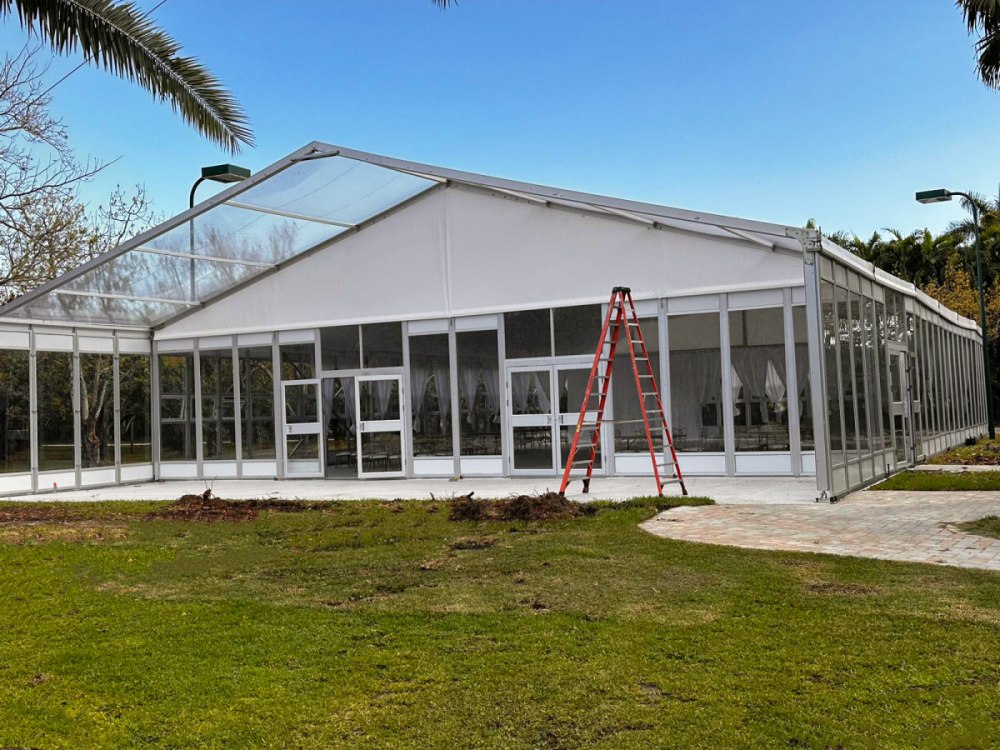How tents can effectively handle adverse weather conditions
 Jul 26, 2024|
Jul 26, 2024| View:186
View:186When using a tent, it may encounter strong winds, heavy rain, heavy snow, high or low temperatures, etc. Therefore, it is crucial to consider these potential challenges during the design phase and implement effective measures to ensure the tent's safety and stability. By focusing on structural design, material selection, fixing methods, routine maintenance, and safety measures, the tent's resistance to extreme weather and its service life can be significantly enhanced.
1. Structural Design
Stability Enhancement: The structural design should focus on improving stability to withstand external impacts such as strong winds and snowstorms. This can be achieved by reinforcing the strength and stiffness of the frame and optimizing the overall design.
Ventilation and Drainage: Ensure the tent has good ventilation and drainage properties to promptly discharge internal water and moisture in extreme weather, reducing the risk of structural damage. Properly designed windows, skylights, and drainage systems are essential.
2. Material Selection
High-Strength Components: Use high-strength materials like aluminum alloy for key components such as pillars and beams to enhance resistance to wind and snow pressure.
Quality Tarpaulin: Select high-quality waterproof materials like polyester fiber or PVC for the tarpaulin to prevent leaks in heavy rain and snow. The tarpaulin should also have flame-retardant and anti-aging properties to ensure durability.
3. Fixing Methods
Appropriate Fixing Techniques: Choose suitable fixing methods based on ground conditions and customer requirements, such as expansion screws, steel drills, or counterweights, to improve wind resistance and stability. Large tents may require forklifts, cranes, and other equipment for installation and fixation.
Strong Connections: Ensure the connections between various parts are strong and reliable to prevent loosening or detachment in extreme weather. This can be achieved by enhancing the design and construction of connecting nodes.
4. Routine Maintenance
Regular Inspections: Frequently inspect and maintain the tent's structure, tarpaulin, and drainage facilities to identify and repair potential problems and hazards promptly.
Cleaning and Lubrication: Regularly clean the tent's surface and interior to remove dust and dirt. Lubricate key components to extend their service life and keep the tent in good condition.
5. Safety Measures
Warning Signs: Install visible warning signs and lines around the tent to alert personnel to potential hazards and avoid straying into dangerous areas.
Emergency Preparedness: Develop emergency plans and response measures for extreme weather events. Keep necessary emergency supplies and equipment, such as snow plows and drainage pumps, ready for quick deployment when needed.
By following these guidelines, the tent's resilience to extreme weather can be greatly improved, ensuring both its safety and longevity.







